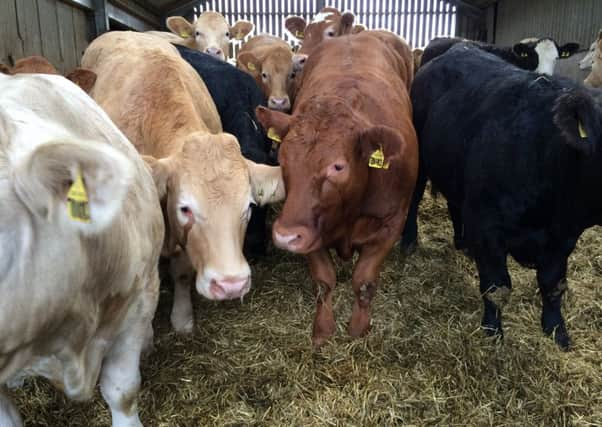Surge in applications for beef efficiency scheme


The announcement that there had been a last-minute surge in applications – with the eventual figure likely to be more than 2,000 applicants covering almost 180,000 beef cows – was made by cabinet secretary for the rural economy, Fergus Ewing.
Welcoming the move, NFU Scotland said that the surge in applications was a sign of producers’ willingness to take the chance to improve the efficiency, sustainability and quality of the country’s beef herd – whilst helping producers increase the genetic value of their stock and reduce their greenhouse gas emissions.
Advertisement
Hide AdAdvertisement
Hide AdBut the union said that to build on this initial success, it would press the Scottish Government for a second round of applications to the scheme to be considered. It also proposed that the monies allocated to the scheme should be sufficient to extend payments from three years to the full five-year term, a shortfall which had initially discouraged uptake of the scheme.
Union president Allan Bowie also said that moves to attract more small herds to participate should be taken adding it wanted changes to the scheme which would recognise the expanding and new herds.
“From a standing start, the BES will encompass around half of the eligible beef herd in year one. That is an important step towards maintaining the premier league position of Scotch beef,” said Bowie.
“We want to see more herds enrolled, the scope to bring in new farmers to the sector and the need for those who are expanding to be properly supported.”
He added: “There remains a job to do for all parties committed to making BES a success, including Scottish Government, in explaining all aspects of the scheme to existing and potential applicants. That said, this is a positive start.
“Scotch beef is the cornerstone of our red meat sector but we cannot be complacent. It is refreshing that so many Scottish beef producers have embraced BES, sending out a positive signal that our iconic beef sector is looking firmly to the future.”
Website to provide farmers with same-day data on carcases
Beef and sheep farmers supplying ABP will soon have same-day access to livestock price and carcase data under a new initiative launched yesterday at the Royal Highland show.
The company’s new LiveStock website will give producers access to weights, grades and value by individual animal and by lot, summarising what is currently provided to finishers via kill data sheets and remittance advice notifications.
Advertisement
Hide AdAdvertisement
Hide AdThe website will also record each animal’s date of birth and health status, including alerts to liver fluke infections.
Speaking at the show, Frank Ross, the meat processor’s general manager at Perth, said that the website had already been recognised as a useful business tool.
“The feedback that we have had is that the functionality is very intuitive to use and the same-day access to the kill data from any device is very useful,” said Ross.
“Our pilot group describes the real business benefit as the benchmarking it allows you to do against all the animals processed via ABP’s abattoirs, as well as with the farmer’s own historic data.”
From the birth date, slaughter date and slaughter weight records, Ross said that farmers could cross-check efficiency records such as daily deadweight gain for each animal. “This tells the producer how much of the animal’s growth was converted to saleable meat.
“An Angus farmer said using the tool also enables him to check back to wider farm records to see where a dam or sire is consistently producing poorer performing progeny, thereby giving him the information he needs to make his culling decisions.”
